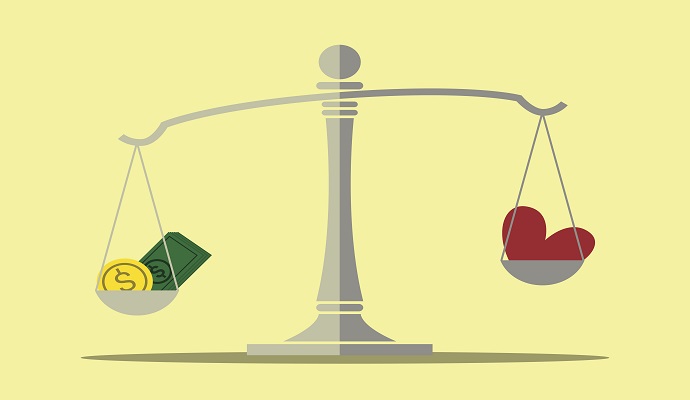Just how the COVID-19 coronavirus will affect the way we live and work is unclear because it’s a novel disease spreading around the world for the first time, but it appears that AI may help fight the virus and its economic impact
A World Health Organization report released last month said that AI and big data are a key part of the response to the disease in China. Here are some ways people are turning to machine learning solutions, in particular, to detect, or fight against, the COVID-19 coronavirus.
Fever detection in public places
A Singapore hospital and public health facility is performing real-time temperature checks, thanks to startup KroniKare, with a smartphone and thermal sensor. One way AI detects coronavirus is with cameras equipped with thermal sensors.
An AI system developed by Chinese tech company Baidu that uses an infrared sensor and AI to predict people’s temperatures is now in use in Beijing’s Qinghe Railway Station, according to an email sent to Baidu employees that were shared with VentureBeat.
Above: Health officers screen arriving passengers from China with thermal scanners at Changi International airport in Singapore on January 22, 2020. Image Credit: Roslan Rahman / Getty Images
The Baidu approach combines computer vision and infrared to detect the forehead temperature of up to 200 people a minute within a range of 0.5 degree Celsius. The system alerts authorities if it detects a person with a temperature above 37.3 degree Celsius (99.1 degrees Fahrenheit) since fever is a tell-tale sign of coronavirus. Baidu may implement its temperature monitoring next in Beijing South Railway Station and Line 4 of the Beijing Subway.
Last month, Shenzhen MicroMultiCopter said in a statement that it’s deployed more than 100 drones capable in various Chinese cities. The drones are capable of not only thermal sensing but also spraying disinfectant and patrolling public places.
Virus tracking
One company, BlueDot, says it recognized the emergence of high rates of pneumonia in China nine days before the World Health Organization. BlueDot was founded in response to the SARS epidemic. It uses natural language processing (NLP) to skim the text of hundreds of thousands of sources to scour news and public statements about the health of humans or animals.
Metabiota, a company that’s working with the U.S. Department of Defense and intelligence agencies, estimates the risk of a disease spreading. It bases its predictions on factors like illness’ symptoms, mortality rate, and the availability of treatment.
Deep learning for coronavirus detection
The 40-page WHO-China Mission report released last month about initial response to COVID-19 in China cites uses big data and AI as part of response to the disease in China. Use cases include AI for contact tracing to monitor the spread of disease and “management of priority populations.”
But academics, researchers, and health professionals are beginning to produce other forms of AI as well.
On Sunday, researchers from Renmin Hospital of Wuhan University, Wuhan EndoAngel Medical Technology Company, and China University of Geosciences shared work on deep learning that detected COVID-19 with what they claim is 95% accuracy. The model is trained with CT scans of 51 patients with laboratory-confirmed COVID-19 pneumonia and more than 45,000 anonymized CT scan images.
The deep learning model showed a performance comparable to expert radiologists and improved the efficiency of radiologists in clinical practice. “It holds great potential to relieve the pressure on frontline radiologists, improve early diagnosis, isolation, and treatment, and thus contribute to the control of the epidemic,” reads a preprint paper about the model published in medrxiv.org. (A preprint paper means it has not yet undergone peer review.)
The researchers say the model can decrease confirmation time from CT scans by 65%. In similar efforts taking place elsewhere, machine learning from Infervision that’s trained on hundreds of thousands of CT scans is detecting coronavirus in Zhongnan Hospital in Wuhan.
AI for predicting survival for patients with severe COVID-19 cases
In initial results shared in another preprint paper updated today on medrxiv using clinical data from Tongji hospital in Wuhan, a new system is capable of predicting survival rates with more than 90% accuracy.
The work was done by researchers from the School of Artificial Intelligence and Automation, as well as other departments from Huazhong University of Science and Technology in China.
The authors say that coronavirus survival estimation today can draw from more than 300 lab or clinical results, but their approach only considers results related to lactic dehydrogenase (LDH), lymphocyte, and high-sensitivity C-reactive protein (hsCRP).
In another paper “Deep Learning for Coronavirus Screening,” released last month on arXiv by collaborators working with the Chinese government, the model uses multiple CNN models to classify CT image datasets and calculate the infection probability of COVID-19. In preliminary results, they claim the model is able to predict the difference between COVID-19, influenza-A viral pneumonia, and healthy cases with 86.7% accuracy.
The deep learning model is trained with CT scans of influenza patients, COVID-19 patients, and healthy people from three hospitals in Wuhan, including 219 images from 110 patients with COVID-19.
Because the outbreak is spreading so quickly, those on the front lines need tools to help them identify and treat affected people with just as much speed. The tools need to be accurate, too. It’s unsurprising that there are already AI-powered solutions deployed in the wild, and it’s almost a certainty that more is forthcoming from the public and private sector alike.
The use of artificial intelligence will decrease time to diagnose and analyze data reducing the time to establish infection patterns and apply preventive measures such as preemptive isolation and quarantine
AI may also enable emergency measures such as restricting airline, rail or bus transportation to and from specific geographic areas..
Unlike previous epidemics of SARS,. MIRS, and Equine flu we now have the first chance to use deep learning for diagnosis and epidemiology.
























